Dogs bring joy, comfort, and companionship into our lives, so it’s only natural to wish they could stay with us for as long as possible. While many breeds enjoy an average lifespan of 10 to 13 years, others face a much shorter window due to genetics, size, or inherited health conditions. These differences can be surprising—and sometimes heartbreaking—for dog lovers hoping for many years with their pets.
Certain breeds, even incredibly popular ones, don’t live beyond nine years. By reviewing lifespan data from nearly 300 breeds recognized by the American Kennel Club, experts have identified which dogs tend to have the shortest life expectancies.
Understanding these patterns not only helps set realistic expectations but also highlights the importance of early care, responsible breeding, and proactive health management.
In this guide, we’ll explore the breeds known for having noticeably shorter lifespans and the unique traits that still make them beloved companions. Whether mixed-breed or purebred, every dog brings something special to the table, and learning more about their health challenges helps us appreciate—and protect—them even more.
Dog Breeds with a Shorter-Than-Average Lifespan
1. Great Dane

Often called the “Gentle Giant,” the Great Dane stands tall and elegant with its long legs, deep chest, and famously calm demeanor. Despite their impressive presence, these dogs average only 7–10 years of life, making them one of the shorter-lived giant breeds.
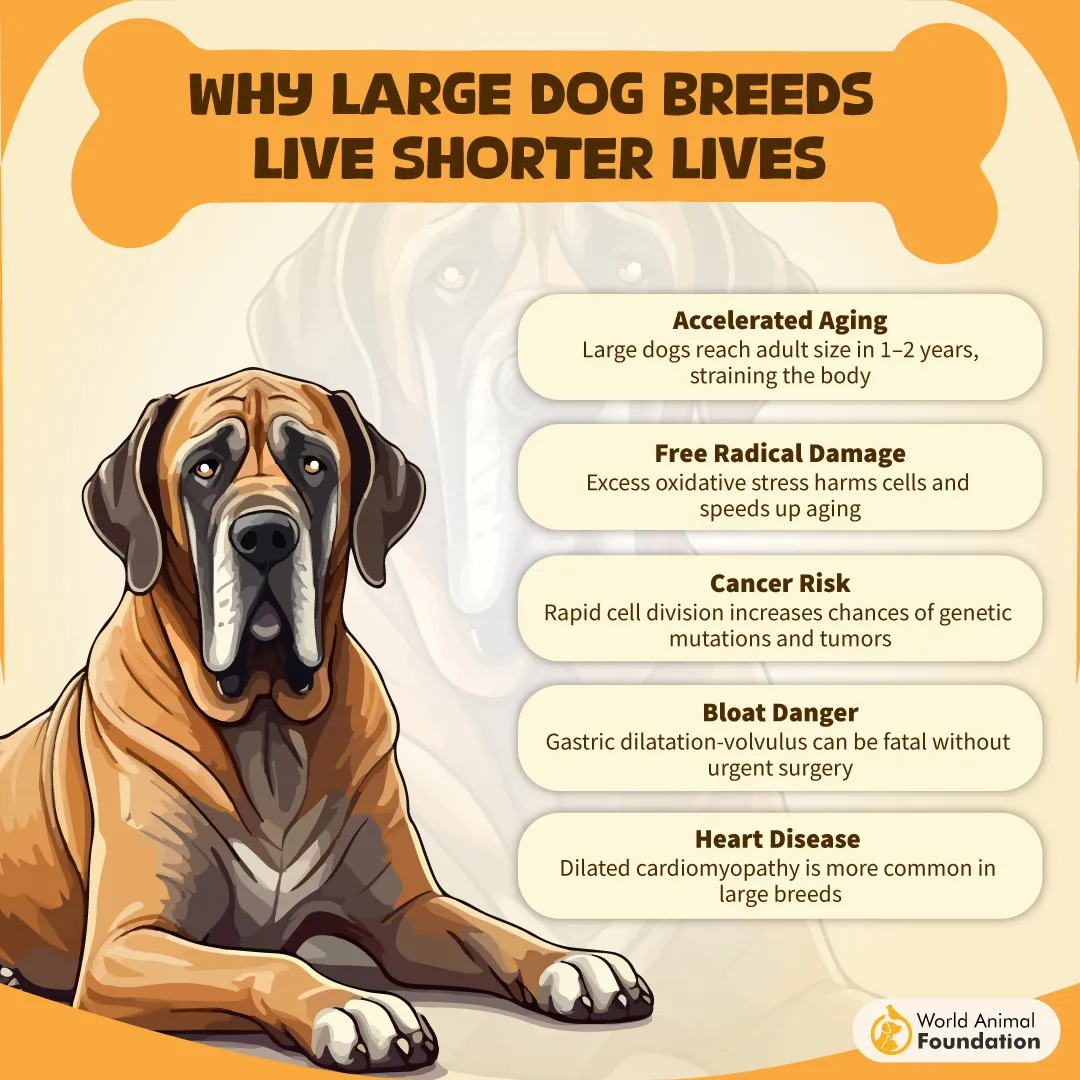
According to the AKC, the Great Dane—often celebrated as the majestic “Apollo of Dogs”—is a gentle, relaxed companion, though caring for a dog of such impressive size, power, and presence requires serious dedication.
Their shortened lifespan is closely tied to their massive size. Larger dogs experience more stress on the heart, joints, and digestive system, increasing the likelihood of conditions like dilated cardiomyopathy, bloat, and bone or joint disorders that impact overall longevity.

Selective breeding for size has also contributed to faster cellular aging in giant breeds, leaving their bodies less able to sustain long-term repair. Because of this, maintaining a lean physique, offering controlled exercise, and feeding multiple small meals are especially important in helping Danes reach the upper end of their lifespan.
Great Danes also require spacious living environments and careful budgeting, since everything from food to medication comes in “giant” quantities. Early socialization and training are essential, as many Danes eventually outweigh their owners.
Fun fact: Great Danes can weigh up to 175 pounds.
🎧 Dogcast
Episode 19 — If Dogs Could Talk: The Vet Conspiracy
If you don’t hear sound, tap the button above to enable audio.
2. Bernese Mountain Dog
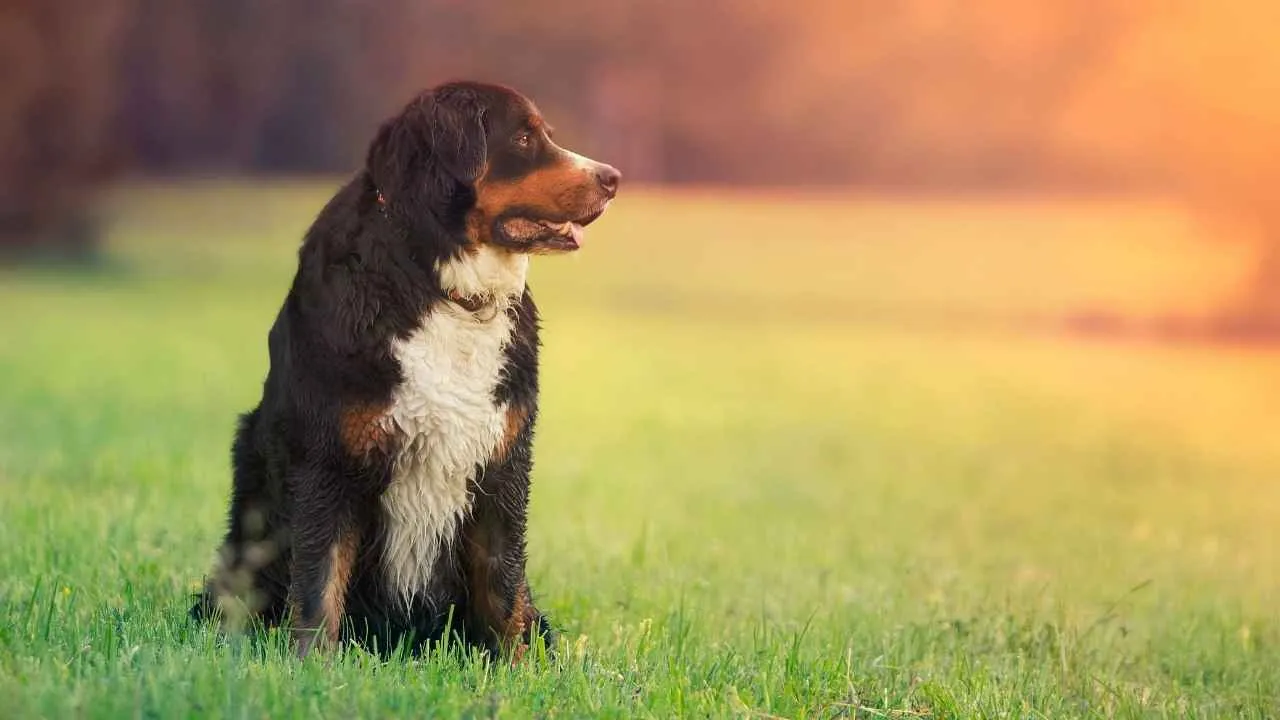
Known as the Berner, the Bernese Mountain Dog is a large, striking breed recognized for its tri-colored coat and gentle nature.
According to PetMD, the Bernese Mountain Dog is a large and striking breed that traces its origins to Switzerland, where it traditionally served as a hardworking farm dog.

As one of the giant breeds most impacted by genetic and size-related health challenges, Berners are noticeably lower than the average for large dogs. Their substantial body mass accelerates wear on joints and increases physiological strain, contributing to earlier aging.
Genetics also plays a significant part in their longevity. Berners are prone to inherited conditions such as hip and elbow dysplasia, gastric dilatation-volvulus, and several blood disorders, all of which can reduce overall life expectancy if not closely managed.
Cancer further intensifies these concerns, appearing at a higher rate in this breed than in many others and often striking at a young age.
Fact: Nearly half of all Bernese Mountain Dogs die from cancer, far above the approximate 27% rate seen across all dogs.
3. Irish Wolfhound
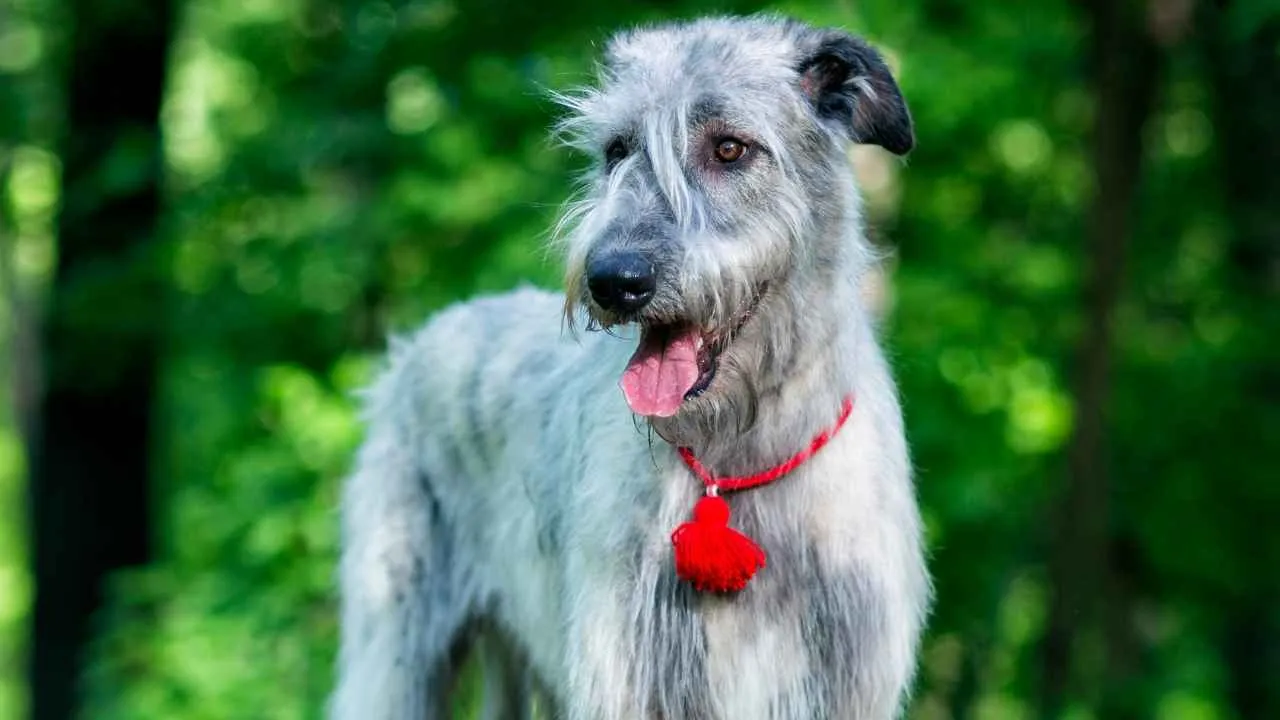
Also known simply as the Wolfhound, this towering sighthound from Ireland is famous for being the tallest dog breed in the world.
Its wiry coat, long limbs, and gentle, soft-spoken nature create the iconic “gentle giant” impression that wins over so many admirers. According to WebMD, Irish Wolfhounds are described as gentle, calm, and deeply loyal companions.
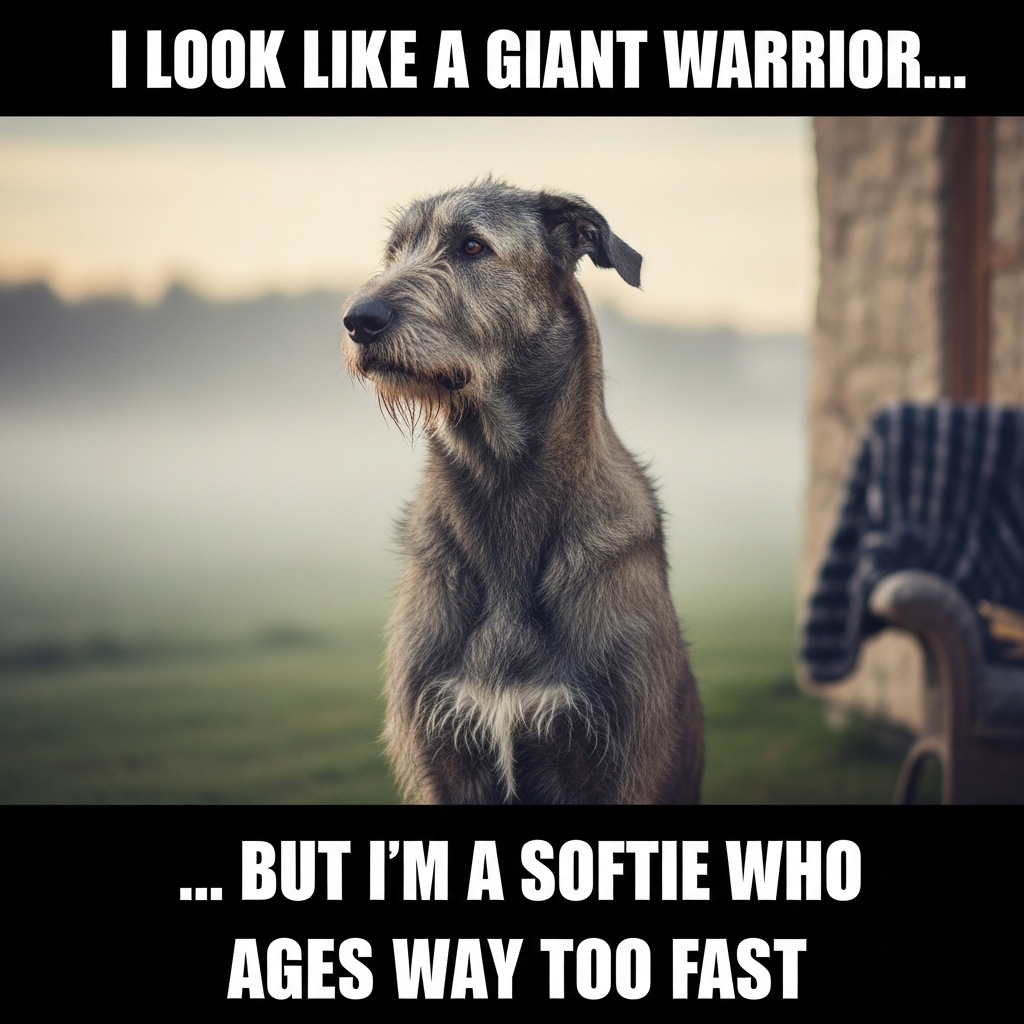
As a true giant breed, the Irish Wolfhound is among the dogs most prone to shortened lifespans. Their impressive size places tremendous stress on the heart, bones, and joints, contributing to a typical life expectancy of just 6–8 years, far below the canine average.
Health concerns such as bone cancer, dilated cardiomyopathy, and gastric dilatation-volvulus (GDV) occur more frequently in breeds of this scale. Regular veterinary monitoring, a controlled growth diet, and strategic meal routines can help reduce risks, but genetics still play a major role.
Because large breeds age rapidly, Wolfhounds often show signs of seniority early, making preventative care especially important. Maintaining a lean physique, avoiding rapid puppy growth, and providing low-impact exercise support better mobility over time.
Fun fact: An Irish Wolfhound can stand over seven feet tall when on its hind legs.
4. Newfoundland
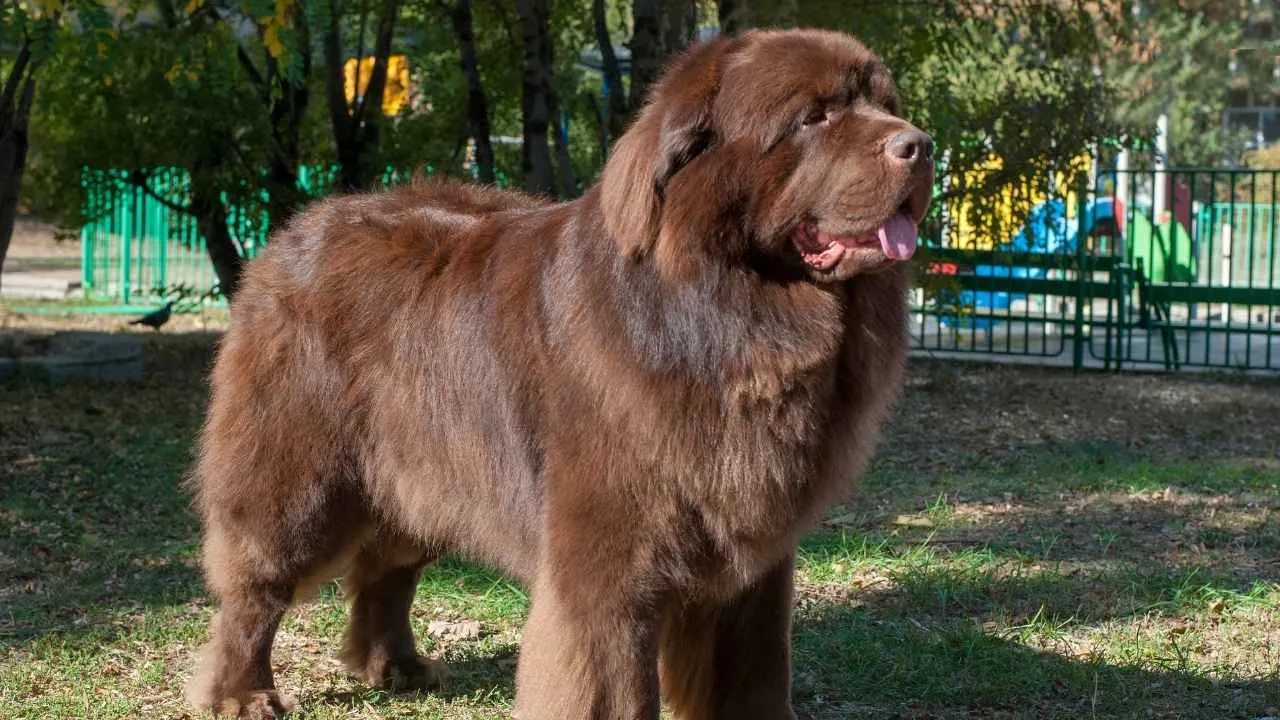
Often referred to simply as the Newfie, the Newfoundland is a giant, water-loving working dog known for its gentle, patient nature.
Newfoundlands have a notably shorter lifespan, largely due to their massive frames. Their size places added stress on the heart and joints, increasing the likelihood of conditions that can cut their lives short compared to smaller breeds.

Like many large dogs, they face a heightened risk of orthopedic disease and cardiac issues, both of which are common contributors to reduced longevity. Early monitoring, weight control, and joint-supportive care can help slow the progression of these problems.
While not brachycephalic themselves, Newfies experience challenges similar to short-faced breeds in that structural traits—especially their bulk—can influence heat tolerance and respiratory effort. Thoughtful management and routine vet care are essential to keep them comfortable throughout their years.
Fun fact: Newfoundlands are known for their love of water and natural lifesaving instincts.
5. Mastiff
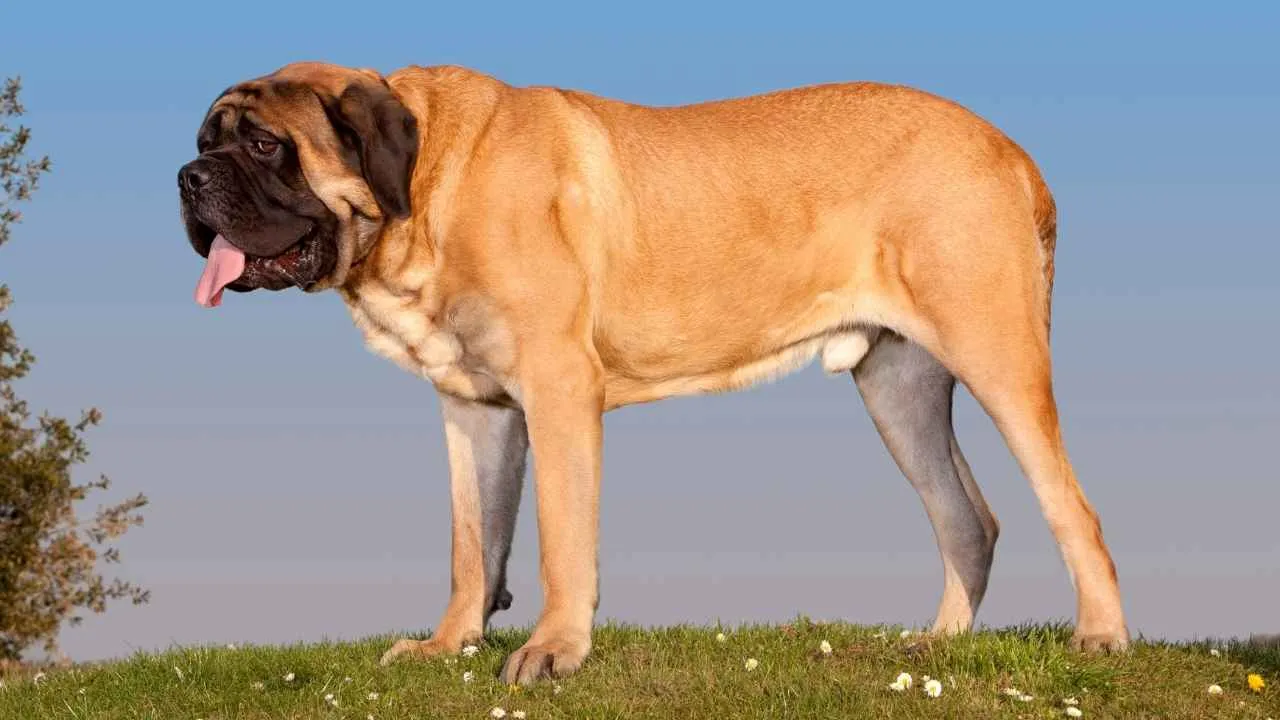
Often referred to simply as the English Mastiff, this giant breed is known for its massive frame, square head, and signature black mask. Despite their powerful build and impressive presence, Mastiffs carry a calm, loyal temperament that has made them dependable guardians for centuries.
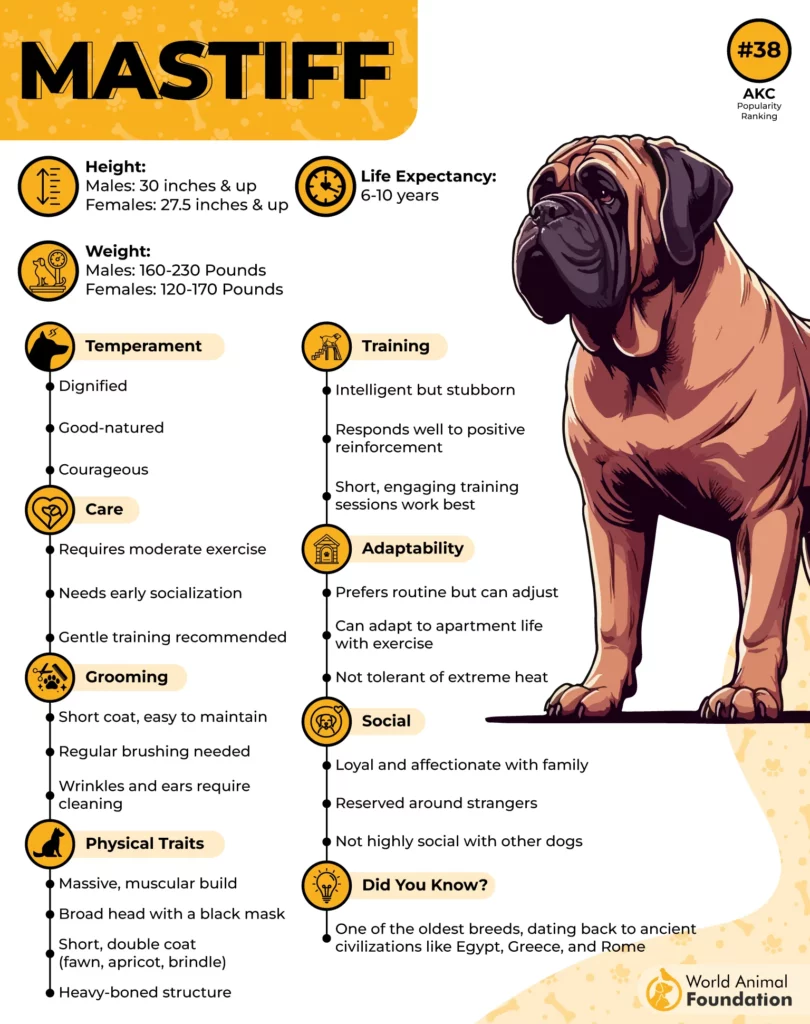
Given their size, Mastiffs fall into the category of giant working breeds with shorter lifespans, typically living 7–9 years. Their heavy bodies place stress on joints and organs, making them more vulnerable to conditions that impact longevity, especially compared to smaller dogs.
These dogs thrive with steady, low-impact activity that supports mobility without overexertion. Because they are prone to issues like bloat and hereditary kidney concerns, careful monitoring, balanced nutrition, and controlled exercise are essential to help them withstand the physical demands that come with their size.
Regular vet checkups play a major role in managing heart strain, weight, and musculoskeletal pressure—key factors that influence survival in large working breeds.
Fun fact: A legend from the 1400s claims a Mastiff saved an English knight at the Battle of Agincourt.
6. Saint Bernard

Also known simply as the St. Bernard, this giant mountain breed is famous for its bear-like appearance, gentle nature, and loyal personality. Their massive build is a defining feature—but it’s also part of what contributes to their shorter lifespan.
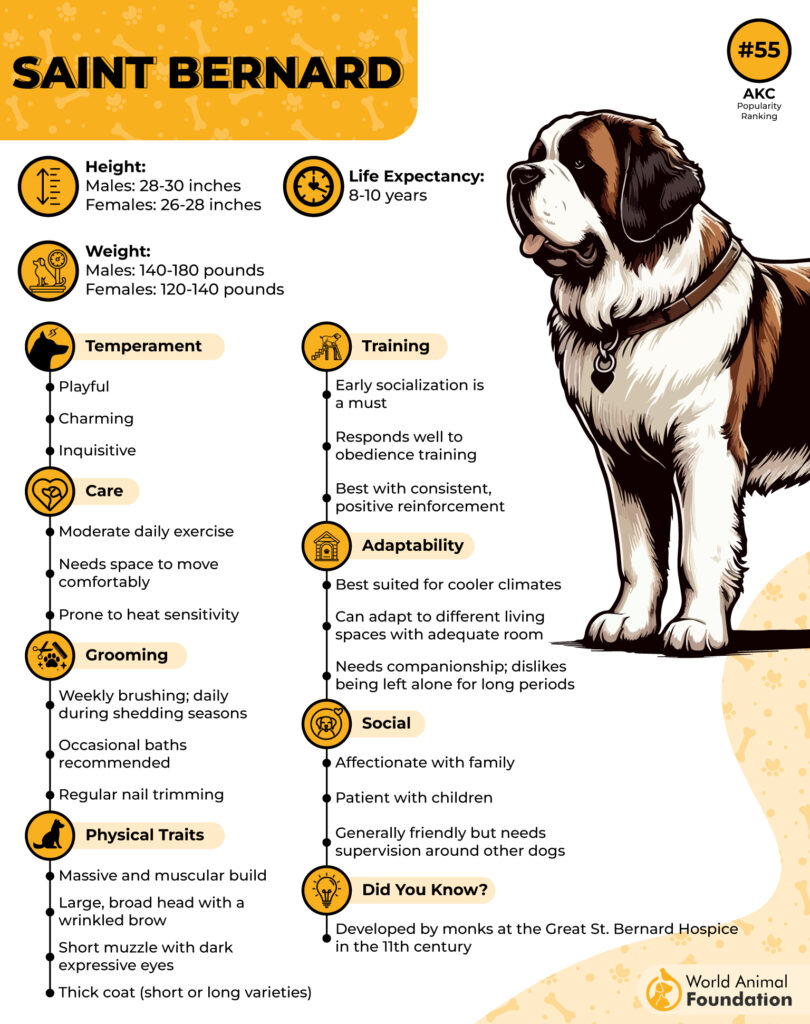
Saint Bernards generally live 8–10 years, a typical range for giant breeds. Their size puts significant stress on their joints, making them prone to hip dysplasia and arthritis earlier in life, which can quickly affect mobility and overall comfort.
Heart-related conditions are another concern, as this breed is predisposed to cardiac issues that may develop while they are still relatively young. Regular screenings and weight management can help, but these problems remain a leading factor in their reduced longevity.
St. Bernards are also vulnerable to gastric dilatation-volvulus, eye abnormalities, and bone cancer—all conditions that can shorten their lifespan without early detection.
Fun fact: Despite their size, Saint Bernards are known for being incredibly eager to please.
7. Leonberger
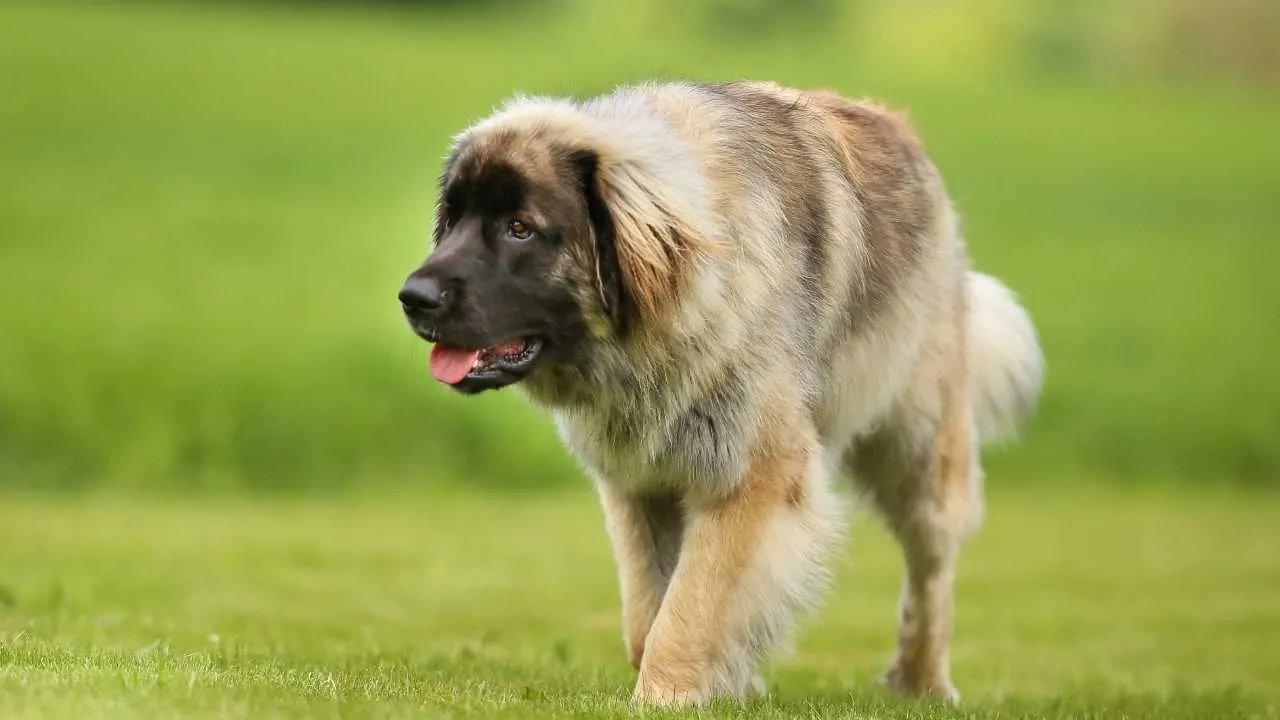
Often called the Leo, the Leonberger is a giant working breed known for its lion-like mane and majestic presence. Developed from Saint Bernards, Pyrenees Mountain Dogs, and Landseer Newfoundlands, this powerful dog blends strength with a gentle, family-friendly temperament.

Because of their massive size, Leonbergers tend to have a shorter life expectancy—typically around nine years—making responsible breeding essential. Selecting lines screened for orthopedic issues, heart conditions, and cancer can help reduce the risk of early decline.
Longevity also benefits from thoughtful conditioning. Proper exercise routines that support joint health, paired with a well-balanced diet, can minimize strain on their 170-pound frames. Families who maintain a stable, low-stress lifestyle often see improved overall wellness in these giant companions.
Regular veterinary care, genetic testing, and informed breeder practices work hand-in-hand to strengthen the breed’s future. With careful grooming and attentive health monitoring, owners can support their Leo’s comfort throughout its shorter lifespan.
Fun fact: This breed was intentionally developed to resemble a lion.
8. Dogue de Bordeaux

Also known as the French Mastiff, the Dogue de Bordeaux is a powerful, stocky guardian recognized for its massive head and bulldog-like features.
With one of the shortest lifespans among dog breeds—often only five to eight years—the Dogue de Bordeaux requires attentive, proactive care. Their brachycephalic build can contribute to breathing challenges, heat intolerance, and added strain on the heart, making respiratory and cardiac monitoring essential.
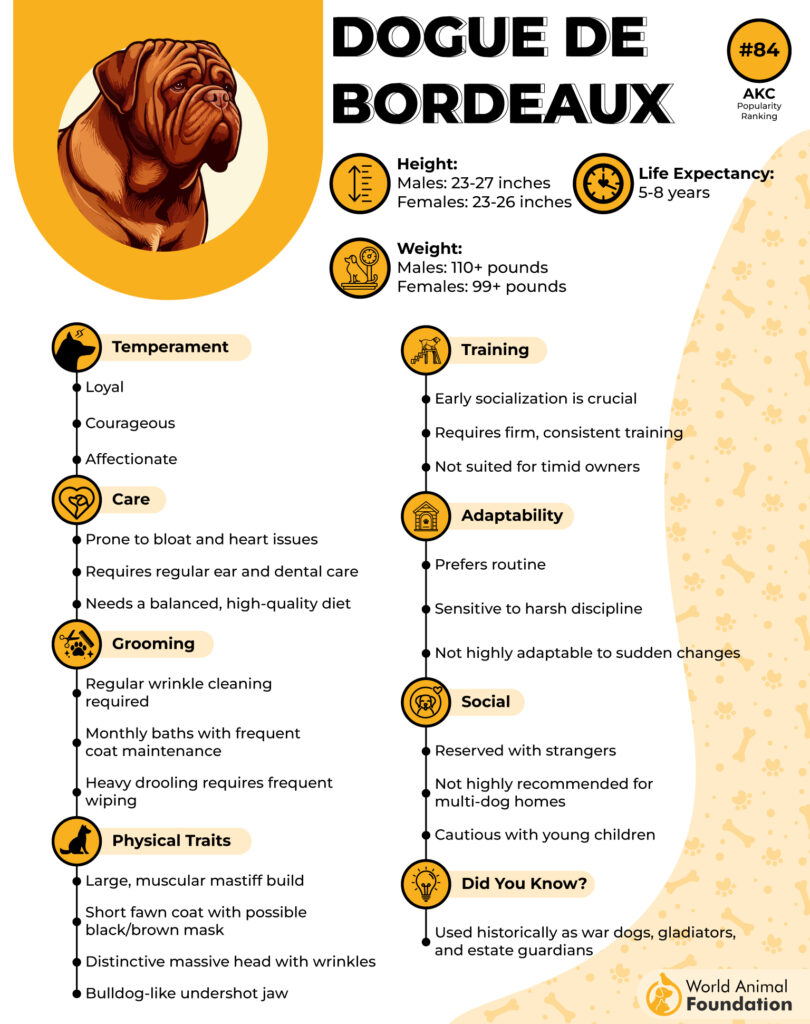
Owners can help extend their years by maintaining a healthy weight, choosing cool environments, and avoiding strenuous activity in warm weather. Because they mature into calm, low-energy adults, gentle indoor enrichment and brief, relaxed walks are ideal for supporting their overall well-being.
Routine vet visits, early socialization, and controlled exercise can also play a key role in preventing complications common to giant breeds. Thoughtful daily care not only enhances longevity but also supports comfort throughout their lives.
Fun fact: Some Dogue de Bordeaux live only five years, making them one of the shortest-lived breeds in the world.
9. Bullmastiff
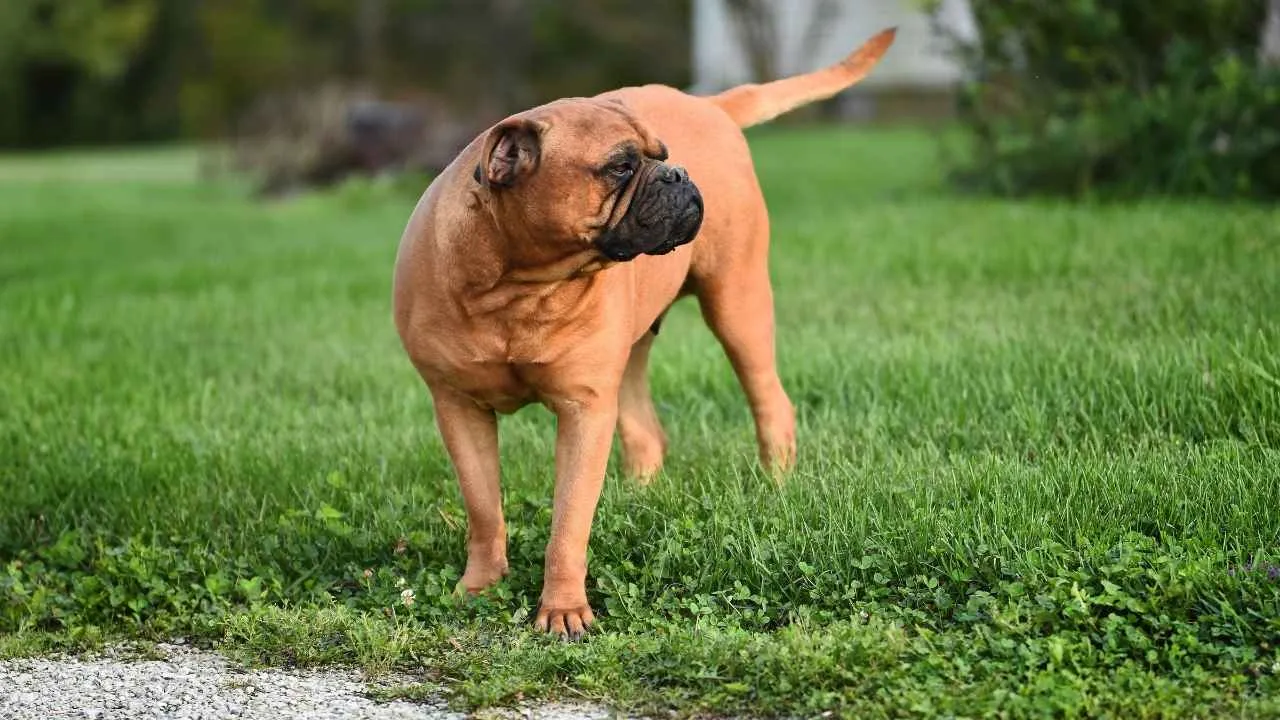
Often referred to simply as the “Bullie,” the Bullmastiff blends the power of the Mastiff with Bulldog agility, giving it a distinctive blocky head, muscular frame, and calm, confident presence.
Known for their tracking ability and protective instincts, these gentle giants thrive in spacious homes where they can stretch out comfortably.
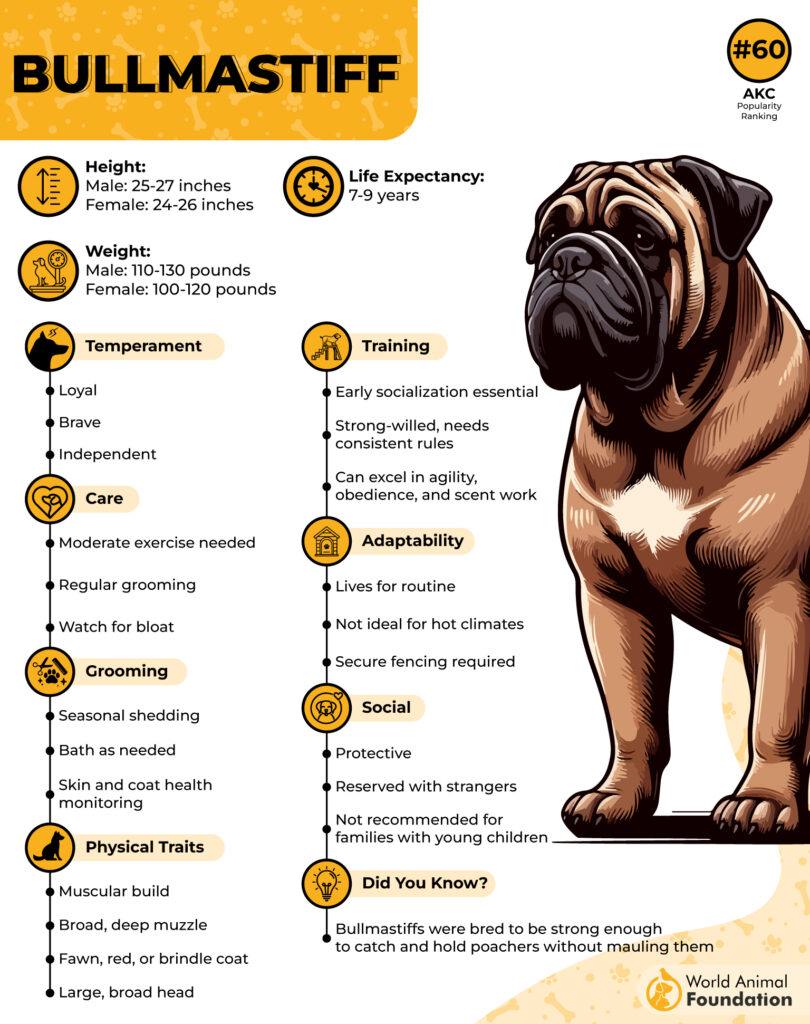
Because Bullmastiffs typically live around 8 to 10 years, early awareness of potential health issues is essential. Subtle shifts—like reduced activity or stiffness—can signal joint problems, a common concern in large breeds with shorter lifespans. Monitoring changes in mobility helps catch these issues before they affect quality of life.
Heart conditions can also appear in this breed, so symptoms such as coughing, difficulty settling, or sudden fatigue warrant immediate veterinary attention. Regular checkups become especially important as they enter middle age, helping detect cardiac and respiratory problems early.
Bullmastiffs are also prone to eye and skin concerns, including entropion and ear infections, so any redness, irritation, or discharge should be evaluated promptly. Sudden bloating, weight changes, or unexplained lumps are additional red flags.
Fun fact: A UK study recorded the Bullmastiff’s life expectancy at 10.2 years.
10. Neapolitan Mastiff
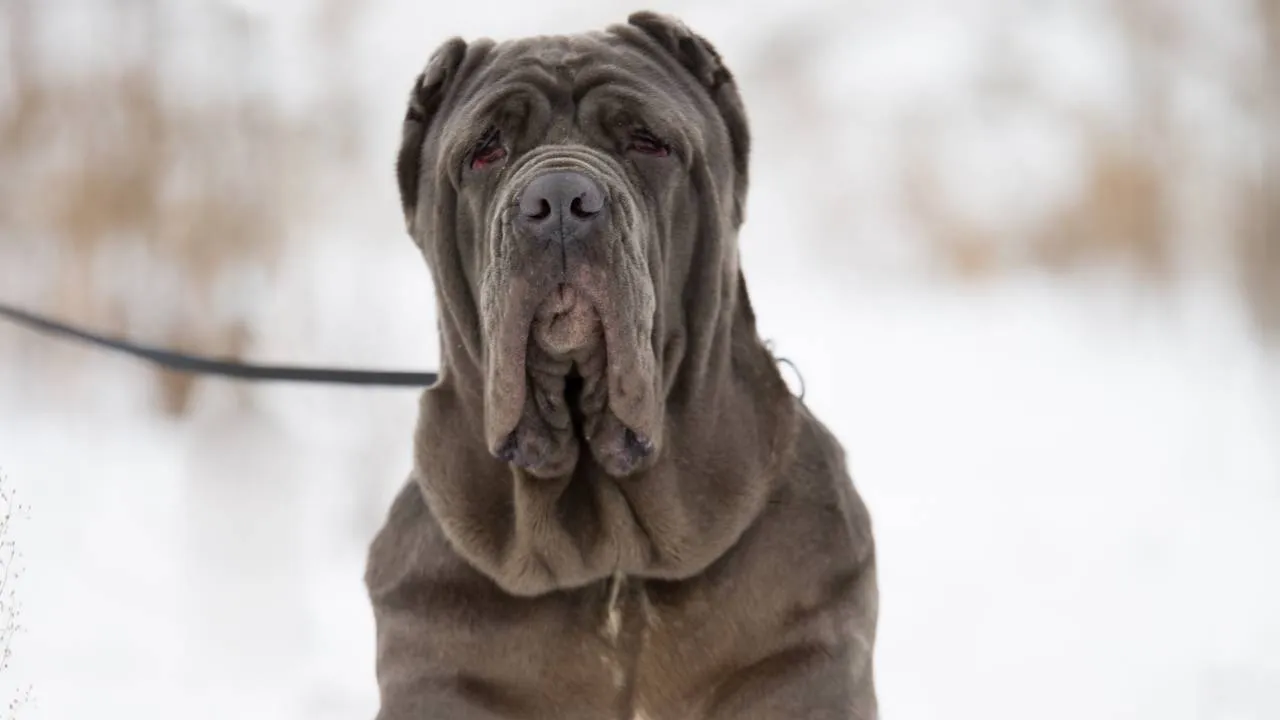
Also known as the Mastino Napoletano, the Neapolitan Mastiff is easily recognized by its dramatic folds, heavy frame, and imposing presence. Behind the massive build is a gentle, devoted guardian whose average lifespan reflects the challenges giant breeds often face.
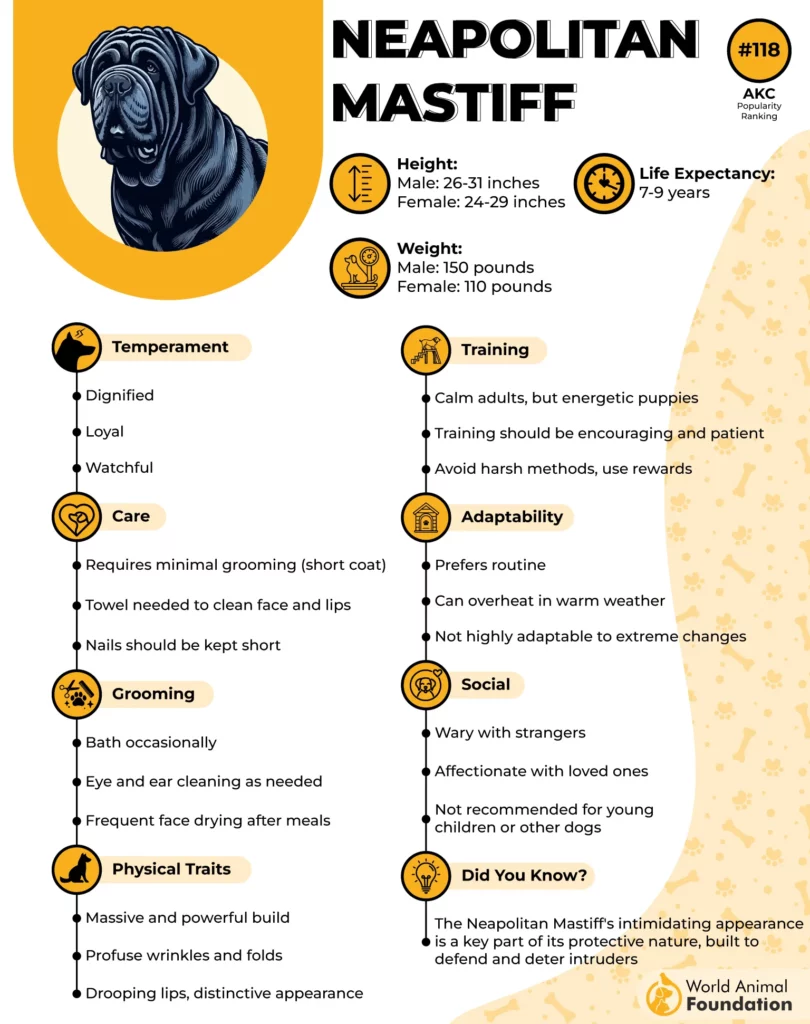
Their shorter life expectancy is largely tied to size-driven health issues, including spinal concerns, gastric torsion, and heart disease. These conditions can progress quickly, making early detection essential for families choosing such a powerful yet sensitive companion.
Because musculoskeletal problems are common in this breed, owners must stay attentive to changes in movement, posture, or comfort. Timely intervention and supportive care can significantly ease pain and extend quality of life for these big, loyal dogs.
Understanding their health risks empowers families to give the Mastino a fulfilling life—one grounded in proper veterinary care, thoughtful breeding choices, and a safe environment.
Fun fact: Their deep wrinkles and loose skin were originally developed to protect them during combat.
Conclusion
Understanding that some dogs live shorter lives than others helps pet parents make informed, compassionate choices. While many breeds enjoy an average life expectancy of 10–13 years, certain pups—like the English Bulldog, American Bulldog, or Scottish Deerhound—face unique health problems that reduce their time with us.
Even mixed-breed dogs can encounter issues such as spinal disease or heart complications, making attentive care essential for every furry friend. Providing high-quality dog food, a proper diet, and regular veterinary visits plays a major role in supporting their overall health.
Though some breeds may not have a long lifespan, they still bring immense joy, devotion, and companionship. Whether you admire the affectionate Cavalier King Charles Spaniel or compare them with other breeds known for longevity, the goal is always to help each dog enjoy a healthy life.
With mindful care, enriched environments, and country living or city routines that meet their needs, pet owners can make every year count for their cherished companions.


